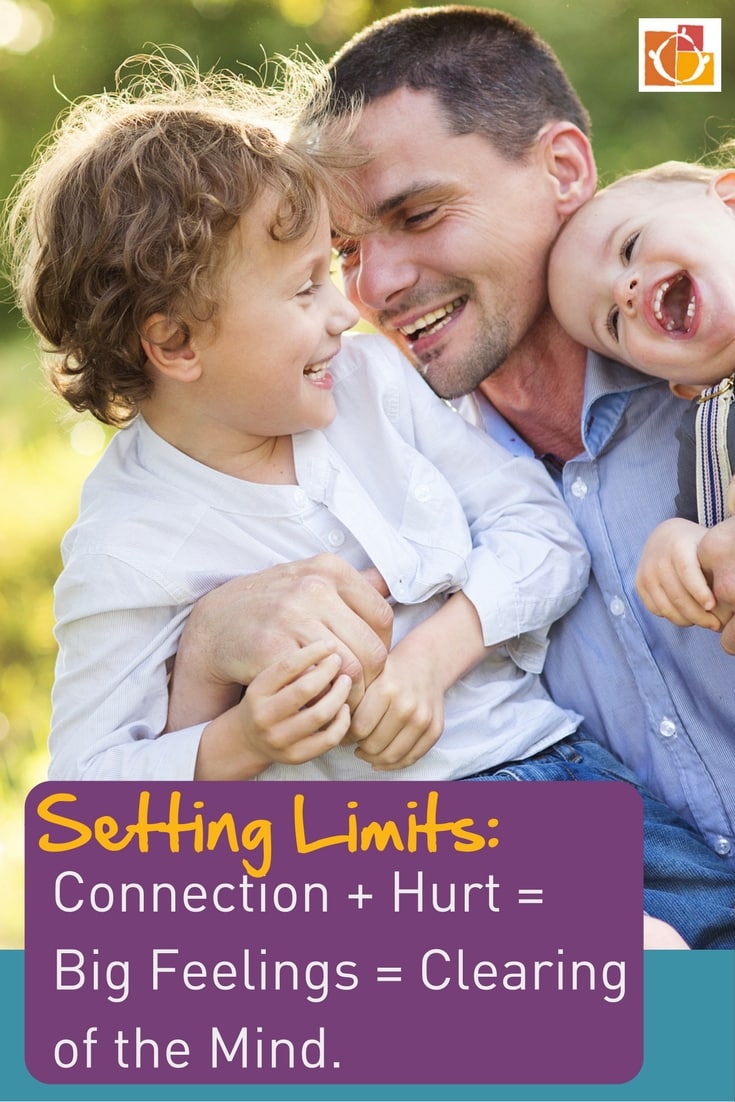Even when we bring our best selves, by not shouting, bribing or threatening children when we try and tell them no, setting limits, and having them listened to, still often feels like an uphill struggle.
But there's a simple way to reach children who are acting off-track.
 Use touch over words.
Use touch over words.
When children are acting irrationally, they are trapped, says Hand in Hand Parenting's Patty Wipfler. “They don't want to be scared, or wild, or hurting people,” she says. “But they have no idea how to get out of it themselves. They need your help.”
“Your limit is like a gift that sets them free,” she says. “A rescue squad.”
When a child is caught in his feelings, his pre-frontal cortex shuts down. He becomes immune to reasoning and logic, and so words go unheard.
However, even with the pre-frontal cortex in shut-down, a child's social and emotional centre does keep running. This is the part of the brain that responds to connection, body language, closeness and warmth.
Why is this important?
Because it proves that kids are more responsive to touch than to words.
Set the Limit
To bring the limit, it is essential to stop the action. Use your body to get between your child and whatever he is doing. Unless a child is hurting another, there's no need to move in fast.
Use as few words as possible. Under five words works best, says Patty.
“If a child is disturbing the dog, gently put your hand on his,” she says. Make eye contact and softly, but firmly, say “No.”
That one word, coupled with your touch, your eyes and your warm engagement, should halt the behavior.
And then wait.
As a child's natural instinct to heal takes hold, you will see them deal with new feelings.
You may see:
- Struggling and screaming
- Tantrums
- Tears
- Aggression
No words are needed as these feelings erupt. This release is your child washing away his bad feelings. Stay close, offer an occasional word of comfort or gentle touch until he comes to you. If he is kicking, keep him, and yourself, safe. “You may have to parry, bob up and down,” Patty says.
Don't feel like you have to solve the situation or stop the tears. There is no need to bribe, lecture or reason. Children will feel a parents' closeness and empathy while he works on his feelings.
If you need a formula to hold onto the next time you set a limit, it would be this:
Connection + Hurt (shown in a child's irrational behavior) = big feelings = clearing of the mind.
Try this 2-Step Plan for Setting Limits the next time your child is acting out.
- Move in with your body, halt the action
- Listen to the feelings play out
After a child has cleared away all the hurts you'll see much better behavior. “You'll see a child that wants to be with you. A child that wants to co-operate,” Patty says.
What to Say When Setting Limits
If you need some ideas for short, gentle, guiding sentences, try these:
“I can't let you do that.”
“Oh, honey no.”
“Come back.”
“It's time.”
“That's your brother's”
“No, you can't have another.”
“No.”
To hear how softly Patty uses these watch this clip
From the Hand in Hand Toolbox:
For more on Setting Limits get this article and checklist
Learn why crying is good for your child read What to Say During Staylistening
Learn about Setting Limits in a way that connects and fosters growth with your child with our Setting Limits & Building Co-Operation online class. It's FREE in Hand in Hand's Parent Club Community.
Go here to get the coaching and support you deserve as you learn how to use the Hand in Hand Tools effectively for more consistent results, creating more cooperation and peace in your home.
